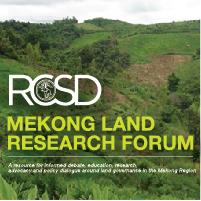Resource information
Land is the most important productive asset in agrarian societies such as Cambodia’s. Throughout Cambodian history, land ownership rights have varied with changes in government. In the period before French colonisation (pre-1863), when all land belonged to the sovereign, people were freely allowed to till unoccupied land and could cultivate as much as they liked. With French colonisation, a property-rights system was introduced in 1884. After Cambodia gained independence from France in 1953, a Western-style land ownership system continued until 1975, when the Khmer Rouge seized power and eliminated all private property rights. Land ownership rights were reintroduced in 1989, following the failure of the Khmer Rouge regime in 1979 and ten years of unsuccessful collectivised production. Within ten years of the reintroduction of private ownership and the redistribution of land, land issues have become one of the most sensitive economic, social, and political issues in Cambodia, demanding urgent solution. In the absence of comprehensive land-related data, this study extensively analyses secondary data and primary data from four large-scale surveys to better understand the magnitude of current land issues. Based on this analysis, it appears that most of Cambodians own at least some land, but only a small proportion of the population has official land titles. Over 70 to 80 percent of the total rural population possesses agricultural land acquired in different ways (government distribution, gifts from relatives/friends, purchase, or clearance of unused land), but only 1 percent has legal title to their land. The average size of agricultural holdings in Cambodia is quite small (only about 1 hectare per family) and distribution is highly unequal. Female-headed households generally have smaller holdings than male-headed households. About 40 to 50 percent of the landless and marginal landholders possess only about 10 to 15 percent of all agricultural land in rural areas. The estimated Gini coefficients of land concentration range from 0.47 to 0.66 for the different surveys that target different population groups. Even though only a very small proportion of the population has official title to their land, people have been actively transferring land (their only productive asset) on the market. Not only has private property changed hands, but also common property, such as forestry and fishery resources (state property), has been actively transferred to private use as concessions or for long-term investment. In the concluding chapter, the study draws some policy implications and proposes some suggestions for the improvement of future studies of land issues. The suggestions include questions to be answered in future research, as well as specific items to include in future survey questionnaires.


